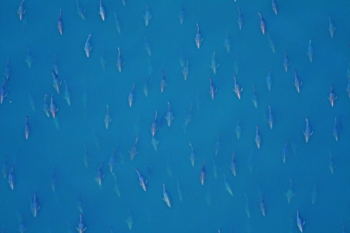A Lot of Bluefin
Quality Up, Price Down

“When tuna do not strike the traditional herring or mackerel baits, veteran fishermen like Captain Dick LeBlanc of Wedgeport, Nova Scotia, fashion new lures from strips of pork odor from the outer skins of dog fish.” Wedgeport, Nova Scotia, September 1971. Red Boutilier photo (See “One of A Kind,” about Maine photographer Red Boutilier at fishermensvoice.com – Archives/January 2011.
The New England bluefin tuna season started out with a thud. In mid-September, buyers were reporting that there was a lot of tuna and the quality is good, but “prices are really bad,” said Marvin Perkins at Yankee Fisherman in Seabrook, N.H. Japan is the big driver in bluefin markets and price. It consumes about 80% of the bluefin tuna harvested. In mid-September, a few things were impacting bluefin prices. The Japanese yen is at 123 against the U.S. dollar, up from 83 not long ago. “At the start of the year, there was a lot of red meat, not fat, which meant it was not being shipped to Japan. That flooded the U.S. which, therefore, was paying lower prices,” said Steve “the Gut” Merrill, at North Atlantic Traders, Ltd. in Maine and Massachusetts. In addition, a major Japanese holiday in the third week of September is expected to stall shipments to Japan for a while.
Merrill said they were getting fish off Georges, but the best quality was coming from inshore waters, Stellwagen and Isle of Shoals in particular.

School of bluefin tuna, August off Provincetown, MA. OceanAerials.com photo
Rich Ruais, Executive Director of the Atlantic Bluefin Tuna Association, said the season has been off to a slow start, but not so far off historic patterns to be a concern. He said the stocks are strong and he expects a good season for catch figures.
Ruais said there was concern about the grouping of the Pacific bluefin stocks with the North West Atlantic stocks by some international observers. "Our East Coast U.S. stocks are in good shape. If the Pacific is not in great shape, the blending together creates a distorted picture of these individual tuna stocks,” he said.
